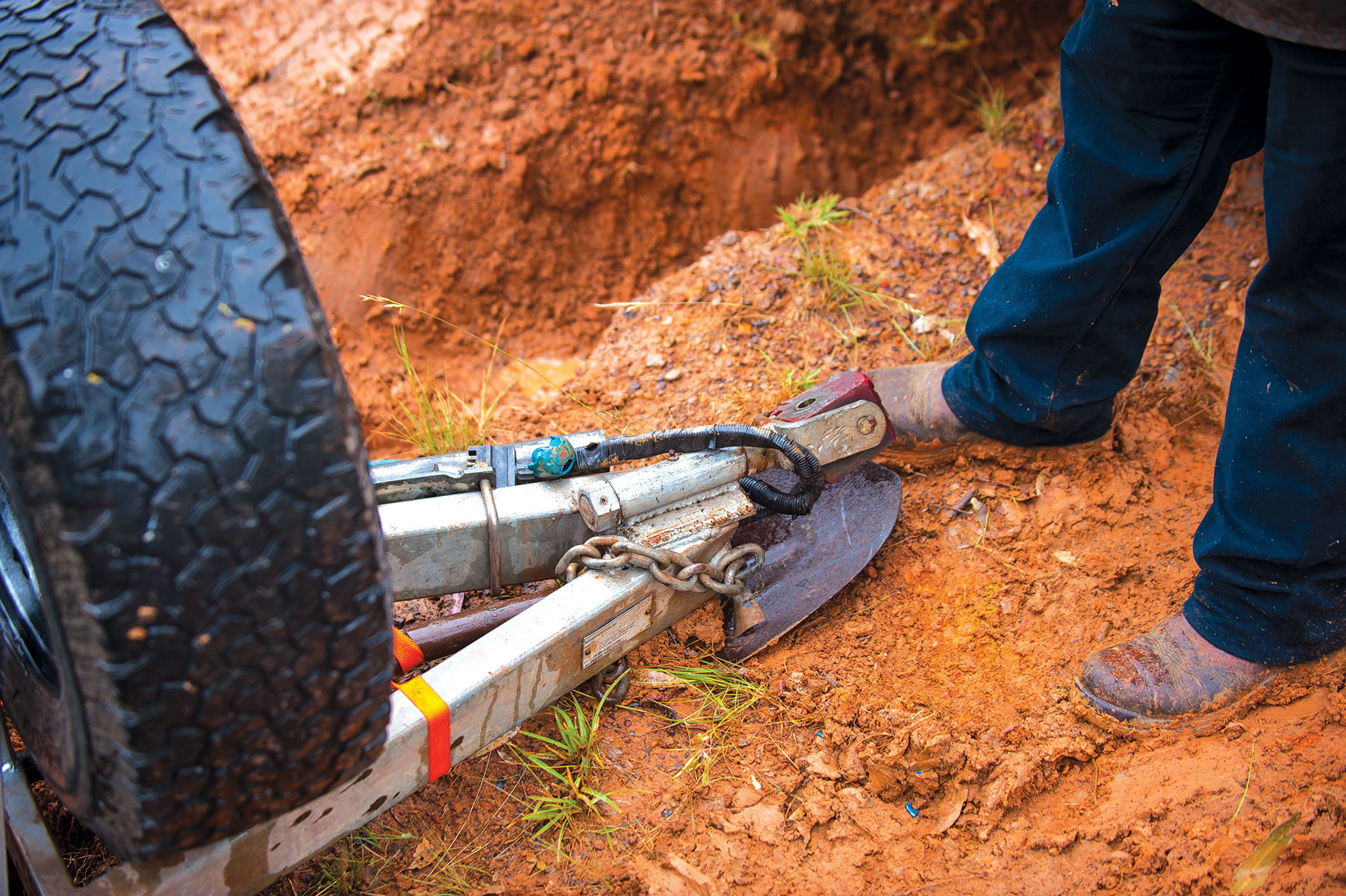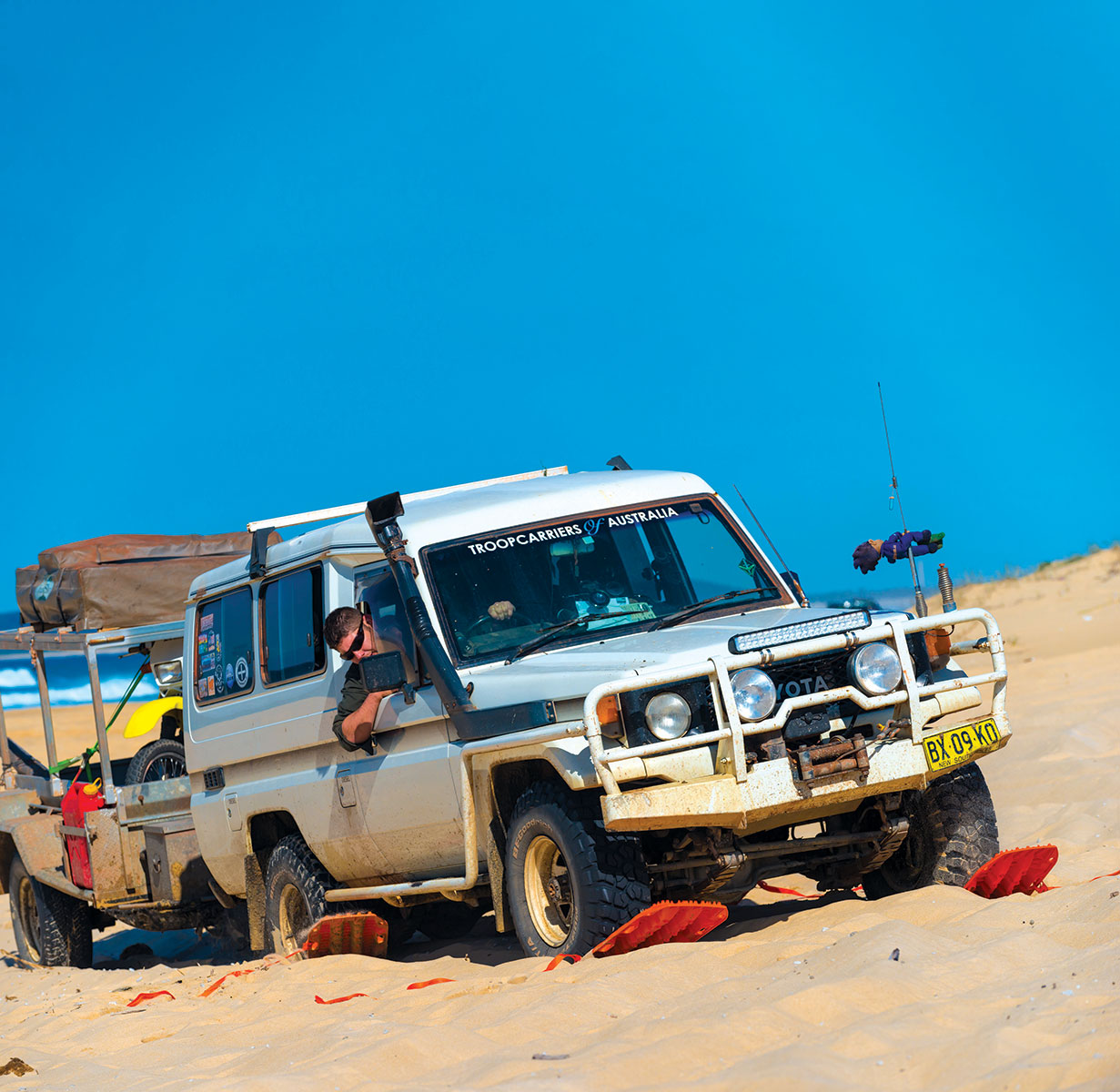One of the advantages in choosing a rough and ready camper trailer over a lumbering caravan is the ability to take it off the bitumen in favour of more remote, offroad adventures. As the tracks get trickier, the sand grows softer or the mud turns friction to fiction, it's really only a matter of time until a vehicle or trailer recovery is required.
When you start to get that sinking feeling, it’s time to bust out the essential recovery gear and get to work to get out of your challenging situation.
As with the driving itself, offroad recoveries are a practiced skill, and though it may seem daunting at first there's no need to shy away from getting out there and getting your hands dirty. You just need to know where to start.





SAFETY
The most important thing to remember when getting out of any 4WD or trailer recovery situation is to play it safe. Stories of recoveries gone wrong can be the stuff of nightmares and can turn an inconvenient situation into a disaster. Ensure you’ve got sufficient safety gear and well-maintained recovery gear, stand clear of loaded straps and cables and don’t put yourself in a dangerous position just to save a minute or two.
RECOVERY POINTS AND GEAR RATINGS
Before you even consider attaching any kind of recovery apparatus to your vehicle or trailer, you'll need to know where they go. Your vehicle should have two rated recovery points at the front and at least one at the back. These have been designed to withstand the huge forces required to pull a laden 4WD from a bog safely and are the only places you should ever attach recovery gear. You'll most likely be able to use your vehicle's hitch as a rear recovery point but you should never use the towball, that can end violently.
Similarly, your camper trailer should have a recovery point at the front and two at the back. Be sure that the rear points are intended for offroad recovery and not simply mounting points for bike racks and accessories. To centralise the pull when using dual rear points, you should use an equaliser strap or bridle.
Any recovery gear you use must also be rated sufficient to the task at hand. This includes shackles, snatch straps, chains, snatch blocks and anything else that will be used to get you unstuck.
FIRST STEPS
Once it's clear that your vehicle needs a recovery, the first thing to do is relax. Assess the situation and consider what forces will be needed, in what direction and what gear will be required.
Often, you'll need to disconnect the trailer from the vehicle and recover the two separately, their combined load is generally too much for a single recovery. Before anything else, it's a good idea to remove as much of the resistance as possible by digging the dirt, mud or sand from in front of the wheels, producing a gentle incline for ease of ascension. Laying a set of recovery boards such as MAXTRAX will also make it easier to roll up and out.
The jockey wheel of your camper trailer can snap if it's down during recovery, so it's best kept out of the way. If the way is clear, it may be possible to leave it down. Instead of the jockey wheel you can support the drawbar with a bottle jack to keep the front of the trailer upright before starting the recovery, but if it looks like it might get snagged or damaged once the action starts you should strap a skid plate to the bottom — a shovel is often the way to go.
If, for whatever reason, you decide to keep your trailer on the hitch and winch both your vehicle and camper in one go, remember that the added load will put a great deal of strain on your equipment. To combat this, you can rig up a pulley system using snatch blocks, as discussed on the following page. These pulley systems divide the force so that less strain is put on the winch and gear, resulting in a safer recovery that won't wreck your kit — even if it does take a little longer.
Winching
Perhaps the best way to liberate your trailer is using electric winches such as a 12V winch. A power winch is not an absolute necessity, and you can save a few dollars by kitting yourself out with a hand winch instead, but the ease and relative safety of a powered winch make it a worthy investment if you plan on doing any serious offroading. Winches should never be used with dynamic ropes or snatch straps, and should be equipped with rated gear, chains and cables. It’s also good practice to use tree protectors when winching off trees, so as not to damage them.
You can reduce the stress on your winch and give yourself a mechanical advantage by running the winch line from the vehicle, through a snatch block attached to a tree and then back to the recovery points of the vehicle, as in Figure 2. If that doesn’t do it, add snatch blocks to the front recovery points on your vehicle and run the line through the two snatch blocks before securing it to a second tree, as shown in Figure 3.

SNATCH STRAPS
Snatch straps are great for vehicle-to-vehicle recovery but are not recommended for pulling a camper trailer out of a jam. Kinetic recovery ropes are stretchy pieces of bound webbing that are used to connect the recovery point or hitch of a free vehicle to the recovery points of a stuck vehicle.
Once the two are attached, the recovery vehicle slowly moves away, stretching the strap and loading it up with kinetic energy. That buildup of energy helps to yank the stuck vehicle from its predicament. Snatch straps are not to be used in mud, as it can be too sticky, and can be dangerous if the proper precautions are not taken.
Always use a dampener and stand clear of loaded straps. They are not to be used for towing or lifting, and unless you like the idea of a snatch strap tearing pieces off your trailer and flinging them in your direction, then do not use them to recover a camper trailer.
NO WINCH, NO WORRIES
Although a 12V winch will make life offroad a whole lot easier, there are several ways to recover a vehicle without one. Hand winches are an obvious alternative, and then there are various devices that use a vehicle's own torque to wind in cables in a winch-like manner; Bush Winch and Bog Out are two such commercially available products.
Hi-Lift Jacks are another handy tool. Not only can they be used for jacking and hand winching, but they also facilitate a technique known as jack casting. This involves jacking the bogged vehicle from the front or back and then pushing it sideways off the jack, thus relocating the wheels and hopefully gaining a better position with enough traction to drive away. It sounds intimidating but it's simple and safe if done properly. The main thing to be conscious of is how the jack will fall once the vehicle is pushed off, if you get this part wrong you can end up piercing panels and doing all kinds of damage.
SAND
There's a good chance you'll bury yourself down to the wheel nuts in the soft stuff but be warned that getting out isn't always easy.
With the potential time constraints of an incoming tide, it's best to have an idea of what to do so you can drive on out of there before you're inundated by the ocean. Sometimes it can be as simple as letting a little more air out of the tyres and digging out the sand in front of the wheels. If that doesn't do it, try adding some traction aids like MAXTRAX or even sticks and logs. But when it comes time to pull out the winch cable, beaches and other sandy spots may pose an additional challenge: no trees.
Getting out of a sandy situation may require you to winch off a sand anchor — a large object buried in a deep hole. This is commonly done using a spare wheel, which is buried two or three times as deep as it is tall. Attaching the recovery strap to the bottom of the wheel will also increase resistance. Keep in mind that this can be a dangerous operation, so it's always a good idea if you can travel sandy stretches with another vehicle so you can haul each other out if need be.




